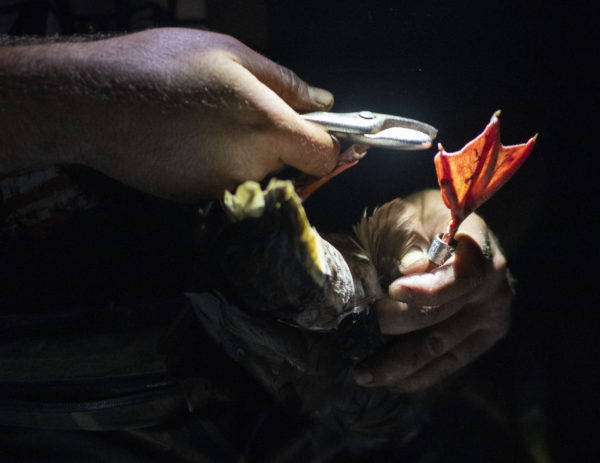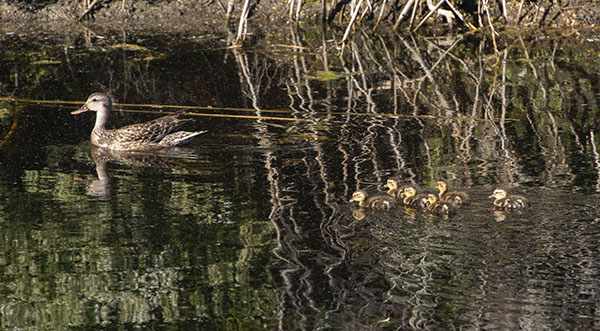
Aug 6, 2019
CWA biologists begin banding at Lower Klamath

CWA's waterfowl biologists are continuing their busy summer by moving up to the northeast corner of the state to check in on breeding and molting ducks.
While water availability continues to hamper Lower Klamath National Wildlife Refuge, in the three units that have water the conditions for ducks are currently excellent thanks to abundant precipitation. Our biologists report that the habitat looks great with plenty of sago pondweed and a bountiful supply of invertebrates available to keep the broods and molters healthy.
Banding operations have been in full stride, with nearly 2,000 ducks trapped by CWA staff working at Lower Klamath and by U.S. Fish and Wildlife staff at nearby Tule Lake National Wildlife Refuge.
Once a week, both crews combine for nighttime spotlighting at one of the two refuges. Riding on airboats after nightfall, biologists and volunteers use spotlights to find ducks on the water and net them one at a time. The birds are then aged, sexed, banded and released. Some are also weighed and their wings measured. The most common species found so far have been mallard, gadwall, redhead and cinnamon teal.
Both redheads and gadwall appear to have excellent brood production, while mallard brood success looks to be decent.
Water on the Klamath units is starting to drop, but they are large enough that there shouldn't be problems with flightless ducks and ducklings getting stranded. Warm nights (>50ºF) could bring on cases of botulism, but a cooling trend this week should help hold off any major outbreaks for a while.


